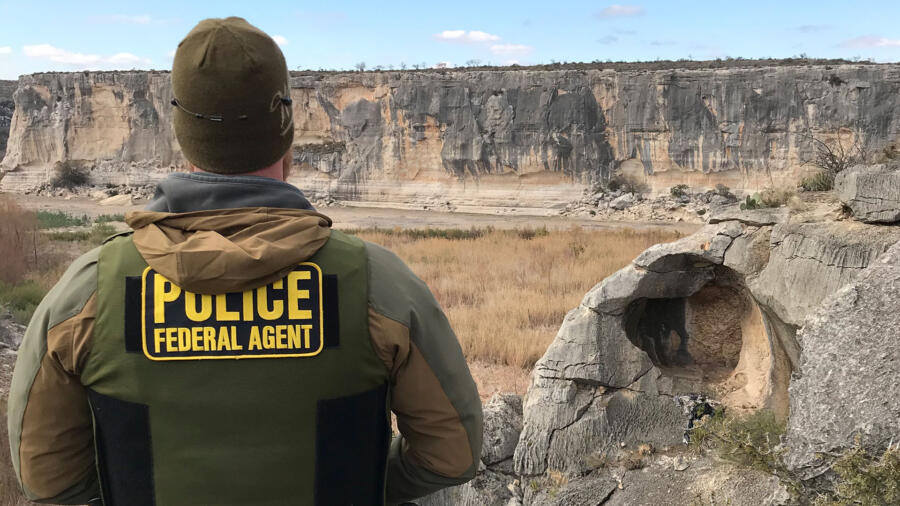The United States has an enormous wealth of national parks. Encompassing more than 85 million square acres, these federally protected lands cover vast swaths of territory, from Alaska’s glacial north to the swamps of south Florida. For many Americans, there are few respites like a weekend sojourn in the majestic American wild.
But where there are people, there’s crime. And where’s there’s crime, there must be justice.
Enter the Investigative Services Branch (ISB) of the National Park System, a group of approximately 30 special agents tasked with solving the felonies at the edge of American civilization.
A&E True Crime spoke with Christopher Kuvlesky, an ISB agent stationed in the Great Smoky Mountains National Park on the Tennessee/North Carolina border.
The National Parks System is so vast, and there are comparably so few investigators. How many parks are you, personally, responsible for overseeing?
230-some out of the 400 [sites]. Most of them are real small national historic sites.
The east has more national parks than out west, [and] I’m in the Atlantic field office. The Atlantic field offices encompass everything from northern Maine (up in Acadia National Park) to the Caribbean (Virgin Islands, Puerto Rico) and then pretty much west to the Mississippi River. But that mass of land is actually really small pockets of federal land. So it’s more about, logistically, how do we get to those places quickly if we need to, to do the investigation. A lot of times, parks don’t have detectives right there, and so they call on us and we travel.
[Stream episodes of Cold Case Files in the A&E app.]
What kinds of crimes do you end up investigating?
The biggest thing we investigate the most—and I think I can speak for all of our field offices—is sex crimes: sexual assaults, rapes. Second to that would be homicide cases.
There are four field offices [for the ISB, nationally]. In my field office, I believe we worked three significant homicides last year. We’re probably intaking a couple sexual assaults a week.
We have a lot more deaths in the national parks, but we don’t get involved in every single one of those. A lot of people go to the national parks to commit suicide, sadly.
How much of your time is spent looking for clues out in the wild?
Usually when a new case happens, you’ll be in the field a lot for probably the first week. We might have to hike or fly a helicopter to a crime scene in the middle of the wilderness at times. But you’re not hiking for days.
I spent an entire year in the backcountry of Yosemite [National Park, in California} as a ranger. I’ve not done anything like that as an ISB agent. It’s mostly office work. We spend the majority of our time talking on the phone, traveling or getting stuff done on cases in the office.
What kind of forensic experts do you find yourself collaborating with?
I’ve worked with forensic anthropologists in the past. We work with them more often than anybody else, trying to get an age range, gender and that kind of stuff from the bones we find. We’ll send it in and see what they say.
In one case, we found a real small portion of a skullcap… I believe it was a male in [his] forties. That one sticks with me because I worked on it early as a special agent, in Yosemite.
There were no other bones, but it was definitely human. And it wasn’t that far from a roadside. Despite all the searching we did, we never found anything other than that one little piece that was brought to us. And you can’t help but speculate on what happened to that person, being that close to the road: Were they murdered? Were they lost and that close to coming out of the woods? There’s no way to determine cause of death from that small amount of bones… and there’s not that much of an investigation you can do without knowing who it is and how they died.
I imagine a lot of cases in the National Parks could run cold like that. Do you have any cases that have gone the other way—cases you’re especially proud of solving?
I was a case agent on the Chimney Tops [trail] fire in eastern Tennessee. The fire started on November 23, 2016. It was arson and ended up killing 14 people, with 2,200 homes lost in Gatlinburg, Tennessee.
Between the Parks Service, the ATF (the Bureau of Alcohol, Tobacco, Firearms and Explosives), and the Tennessee Bureau of Investigations, we worked together to solve the case on who started the fire in the park. It was two juveniles. They used matches, and were reckless with them.
It was the use of our tip line that [led] us to them. And it wasn’t one tip, it was like puzzle pieces of tips that led us to these two particular responsible parties. One man called the tip line and was describing juveniles, and he happened to have a couple pictures that he accidentally took of them. We were able to get other pictures from another person that caught really good facial images of them. And the clothing they wore—I can’t get into details—but it gave us [information on] where to go to find them.
A lot of times people ask us, ‘What do you investigate? You’re an investigator for the park service—do you investigate bear attacks? Or vandalism?’ We’re misunderstood about our purpose.
It doesn’t matter if you’re in a city or not, crime is going to occur. It occurs in national parks. All the same stuff that happens in cities happens in national parks. It just doesn’t happen as often.
Related Features:
Murders in the Wild: Cold Cases in U.S. National Parks
Lollie Winans and Julie Williams: Couple’s Murder at Shenandoah Remains Unsolved
An FBI Agent Recounts a Repulsive Request by Yosemite Killer Cary Stayner During His Interrogation


